Henry Prince and John Smyth-Pigott, Agapemonite Messiahs
Henry Prince was born in 1811 in the city of Bath. His family were well off enough to own property in Jamaica – property which included slaves, as his mother was compensated when slavery was abolished there. His father died when he was young, and his mother took in a lodger named Martha to make ends meet – a devout Catholic who had a profound effect on Prince. He studied medicine at university and qualified as a doctor in 1832, getting a job at a hospital in Bath. After working there for five years, ill health meant that he could no longer keep it up so he decided to cross-train into theology. He applied to, and was accepted at, St David’s College in Lampeter, Wales.
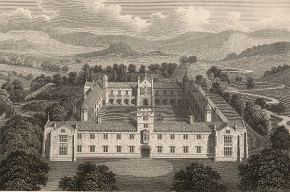
The Anglican church is one of the least dogmatic Christian denominations, and it encourages its clergy to find their own interpretations of scripture. Prince’s beliefs were notably unique even by that standard, but he soon gathered a following that would later be known as the Lampeter Brethren and who gained a reputation as troublemakers with the university authorities. After qualifying he was appointed as the curate of Charlinch in Somerset – normally a junior position, but the resident rector (the reverend Samuel Starkey) fell ill. So the Reverend Henry Prince took the services in his place.
It was a small and sleepy church, with a low attendance and lower level of interest – until the day that Prince began to channel the Holy Spirit. Details of his exact behaviour are scant, but it was enough to get people’s attention, and crowds began to increase. Prince soon began to develop his theology, first dividing the men and women in his congregation and holding separate services for each and then dividing them instead into those who were already saved and those who would be damned if they dd not change their ways. Among the “saved” was his mother’s old lodger Martha, who converted from Catholicism and married Prince. (She was much older than him, leading to even more scandal.) The reverend Starkey was asked by the church authorities to reign his curate in, but instead he was converted and became Prince’s eager deputy. So the Bishop threw them both out of the parish in 1842.
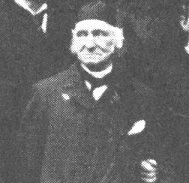
Prince got a temporary position at a church in Suffolk, but his continuing to preach his controversial beliefs led to him being asked to leave after twelve months. This may have been accelerated by him marrying Samuel Starkey’s sister Julia (another much older woman) very shortly after his first wife Martha passed away. He inherited a considerable sum of money from Martha, so he and Samuel left the Anglican church (or were expelled) and founded their own religion. This was the beginning of the Agapemonites.
Samuel went to to Weymouth, and Prince went to Brighton. Prince did attract a following in the famous resort town, but competition was also fierce and it soon became apparent that Weymouth was a better place to set up shop. There Prince, now being referred to by his followers as “the Lamb”, addressed his flock. At this stage there were between a hundred and five hundred of them – the latter the official Agapemonite figure, the former a bit more likely. Many were elderly unmarried women, a class of people often excluded from Victorian society. If their social status was high enough that they could support themselves on investment income, it was considered “beneath them” to work for a living, and so they found themselves pushed to the fringes with little social outlet. His gospel also attracted young unmarried women seeking an alternative to marriage and subservience. They gathered in a large house in Weymouth, where Prince told them that the end of the world was nigh. This was not to be feared, though, but to be celebrated. All possessions would be meaningless in the face of the world to come, so they should share them for the common good. And the new messiah to lead them into this dispensation? None other than Henry Prince himself, of course.
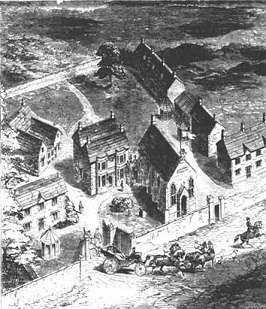
With the funds gained by this apocalyptic bonfire sale, Prince purchased two hundred acres of land in the Spaxton valley in Somerset – sacred land to them as this was near Charlinch where Prince had his first revelation. On this land (christened “the Abode of Love”) they built a mansion, with eighteen bedrooms (not counting servant’s rooms) and a private chapel, all surrounded by a fifteen-foot high wall. Numerous cottages were also spread across the grounds for the various Agapemonite faithful, each with three or four bedrooms. The main house also had plenty of meeting rooms and sitting rooms, for them to gather in. Billiards, for some reason, also featured heavily in the decor – the chapel contained a billiard-table (which would later become infamous), and plenty of comfortable seating. One visitor described waiting in it as:
lounging on a red sofa, near a bright fire, in the coloured light of high lancet windows, filled with rich stained glass; soft cushions beneath my feet; a billiard-table on my right hand; church furniture in oak and brass about me; and above my head the sacred symbol of the Lamb and Dove, flanked and supported by a rack of billiard-cues.
As mentioned, the funding for this came from the rich followers Henry Prince somehow attracted, but this was also to prove a source of problems for him. Among these followers were three sisters named Nottidge, each of which had a £6000 inheritance that went into the common pot. Prince had them “spiritually marry” three of his followers, who were old members of the Lampeter Brethren. These “marriages” were supposed to be purely chaste affairs, as his followers were supposed to renounce carnal desire for each other in order to advance the extinction of humanity. (Prince himself, of course, got to indulge all the carnal desire he wanted as he was, in his own words, a “manifestation of the Holy Spirit made flesh”.) There was a fourth Nottidge sister, Louisa, who Prince pursued to also join his flock. Somehow the eldest sister, Agnes, fell foul of the Agapemonites – whether due to writing a letter to tell her sister not to join the flock, or because she was pregnant (in defiance of the doctrine of chastity) or both. She either fled or was expelled, and went to warn her mother Emily – but too late to prevent Louisa entering the Abode of Love.

Emily also had two sons, and they broke into the Abode and kidnapped Louisa, “for her own good”. The Agapemonites were awakened by her screaming, but not in time to stop her being bundled into a coach and driven off to London. There she was declared insane and put into an asylum. A year and a half later, word reached Prince that Louisa had escaped, but before his men could reach her she was recaptured. This gave him an opportunity to raise her case to the Lunacy Commission, who were responsible for overseeing asylums. They examined Louisa and determined that she was not insane, so she was released and went to Spaxton. Emboldened by this, Prince then had Agnes’ “spiritual husband” (a Mr Thomas) sue her for custody of her child. The revelations in court of the theology and practices of the Agapemonites led to the ruling that Agnes deserved sole custody of the child to preserve it from the corrupt atmosphere of the Abode of Love. Perhaps because of this Louisa didn’t receive a “spiritual marriage”, so that when she died in 1860 her brothers were able to challenge and overturn her will (which left everything to Prince) on the grounds of “undue influence”.
1856 was the year of the most infamous incident in the history of the Agapemonites. For years Henry Prince had declared himself the Holy Spirit made flesh, and now he carried that theology to its ultimate conclusion – he would impregnate a virgin who would not become physically pregnant but who would give birth to the spirit of the new Messiah. The “lucky” vessel for this saviour was a sixteen year old girl named Zoe Patterson, and the union took place on top of the billiard table in front of the whole congregation, while they sang hymns. This was a step too far for many of the Agapemonites, and several left the church as a result. In their accounts they described Zoe as acting “like she was hypnotised”, and many in the press labeled Henry Prince a rapist. Rumours began to spread that he gave sermons naked, and that he had the women of the commune arranged on a special wheel and spun, with the woman who ended up closest to him declared his “bride” for the week. Those faithful who stayed were shaken once again when Zoe found out she was pregnant, as Prince had said beforehand that the offspring would be purely spiritual in nature. However his prophecy was quickly revised, while Zoe gave birth to a little girl they named Eve.
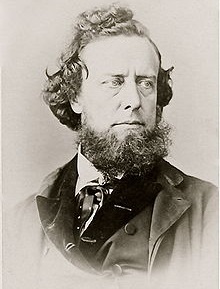
In 1862 Henry Prince sent a letter out to various world leaders announcing that he had “abolished death”, but beyond that life for the Agapemonites settled into a fairly staid routine. The writer William Hepworth Dixon visited the compound in 1867 and devoted several chapters of his book Spiritual Wives to the Agapemonites. He gives a pictures of a group whose great days are past, of men who have spent their lives seeking to save the world but who now wait for what they see as the inevitable end.
A dozen ardent clergymen…run away from their posts, shut themselves up in a garden, surround themselves with beautiful women, muse and dream…and waiting in the midst of luxury and idleness for the whole world to be damned. …[I]n the meantime, the reverend gentlemen play a game of billiards in what was once their church.
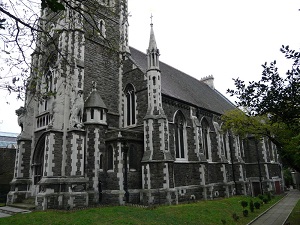
In 1899, after thirty years of musing and dreaming, Henry Prince (in defiance of his own edicts) died. He was buried on the grounds of the Abode of Love, standing upright to await the final dispensation on his feet. The Agapemonites, however, did not die with him. In 1890 an Anglican clergyman named John Hugh Smyth-Pigott had joined the Agapemonites and had reinvigorated the church with his preaching. He was in his forties and had been an academic and a sailor before entering the church. His most notable recruits were Violet and Olive Morris, daughters of a successful London builder. Violet was an architect and Olive was an engineer, and both put their skills in service of the brotherhood to design it a new church in London – the “Ark of the Covenant” in Clapton. Their father was a Quaker, but he helped to purchase the grounds. The church was decorated with statues and stained glass images that, while all still strictly Christian in nature, all held great symbolic meaning for the church. Statues drawn from the Book of Revelations adorn the towers, while above a door is written “LOVE IN JUDGMENT AND JUDGMENT UNTO VICTORY”. A Pelican and Phoenix (representing sacrifice and rebirth) are shown in mosaic, perhaps presaging Pigott’s ambitions.
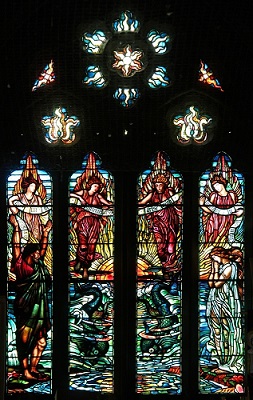
The stained glass windows were designed by Walter Crane, a well-known illustrator. The most famous of these is “The Rising Sun of Righteousness”, showing a sun heralded by angels as it rises from the sea. The lavish decorations were highly appreciated, and to this day “The Rising Sun” is considered one of the finest examples of Victorian stained glass. The church drew a fair crowd, though it probably helped that (unlike Prince) Pigott was still an ordained Anglican priest. As such the Agapemonite influence was kept discreet, while the respectability he brought elevated Pigott still further within the sect. When Prince died and most of the sect fell into despair some saw him as their future, and he was willing to take on that mantle.
In September 1902, the Reverend John Hugh Smyth-Pigott stepped up to his Sunday sermon and announced to the congregation that God was no longer in Heaven. In the face of their consternation, he then pointed at himself and said simply “God is here”. Expanding on this, he explained that Prince had indeed been the Holy Spirit incarnate, and that the New Messiah he had come to herald had arrived in the form of Pigottt himself. This divided the congregation, and of the three hundred present about half began to shout loudly and call him a heretic. It was a testament to the presence of Pigott, though, that the other half wholeheartedly accepted it and declared him indeed the Messiah. The riotous scenes that followed made it into the papers, and the following week an alleged three thousand protestors gathered outside the church to declare Pigott a heretic (or simply, in the grand London tradition of the time, to take part in a riot for a bit of fun). The whole thing allegedly culminated in Pigott attempting and failing to “walk on water” on Clapham Pond. Whether there’s any truth to that story or not, he was forced by the publicity to abandon the “Ark of the Covenant” and retreat to Spaxton.

One odd side effect of the publicity was to make Pigott a semi-important character in another religion – the Ahmadiyya movement, an offshoot of Islam founded by the Indian religious leader Mirza Ghulam Ahmad. His beliefs and teachings, considered heretical by most mainstream Islamic scholars, included the belief that Ghulam Ahmad was both the prophesied Mahdi of Islam and also the Messiah reborn. [1] As such, he wrote to several self-proclaimed Messiahs to order them to cease their heresy. Piggot was one of those he wrote to, though he was also distinguished by being called out in a prophecy. Ghulam Ahmad foresaw a grim end for the English would-be Messiah, though this never actually came to pass.
Ahmadi teachings often state that Pigott never again claimed godhood after being chastised by Ghulam Ahmad, but this is sometimes disputed. In 1905 the registrar was called to Spaxton to record the birth of a girl named Glory, the daughter of Pigott and his “spiritual second wife”. This was a nurse named Ruth Preece (or possibly Greece). Pigott’s legal wife was present at the ceremony, and the newspaper report does play up Pigott’s old messianic pretentions. (Though how much of that was the reporter wanting to play the story up is also up for debate.) The registrar also noted that apart from Pigott and his secretary, the congregation seemed to be entirely female. In fact it seems that almost the entire male part of the flock had left on Pigott’s accession to the throne. This birth was immediately followed by tragedy, however, when an ex-Agapemonite and alcoholic drowned herself in Clapton, leading to much condemnation of Pigott’s teachings as being dangerous.
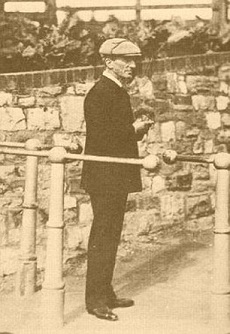
The aforementioned secretary was Charles Stokes Read, and some journalists later claimed that he was the true power in the Agapemonite church at this time. He was the one who arranged for announcements to journalists, and he was the one who told them that Ruth had borne her “spiritual husband” two more children, sons named Power and Life (or possibly Hallelujah). The latter story included the detail that Pigott was still an accredited Anglican priest, and created enough of a scandal that a motion was raised to defrock him. In the end he was not defrocked but rather was simply debarred – forbidden to preach as a vicar. Enraged by this ruling a mob descended on Spaxton determined to tar and feather the would-be Messiah. Fortunately for him he had been sent off to Norway by Read in order to keep him out of the way during the church hearing. Unfortunately for Read the mob then decided he would be a worthy substitute and he was subjected to the indignity, something which may have contributed to his death the following year. To add insult to injury, at the insistence of the Archbishop of Canterbury the defrocking took place the following month. [2]
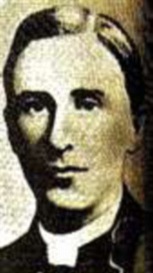
With Read dead his successor as secretary was Douglas Hamilton, an old friend of Pigott’s. The two began a vigorous recruitment campaign that brought fifty new recruits (all female, as the papers pointed out) into the Agapemonite fold. It was the last gasp of the sect though, and they quietly declined into obscurity and secrecy. In 1927 the ex-reverend John Hugh Smyth-Pigott died at the age of 75. [3] He was the last official leader of the Agapemonites, and with his death the church began its slow decline. More and more members fell away, with the last left being Ruth Preece, Pigott’s “spiritual wife”. Decades later Glory’s daughter Kate Barlow would write of visiting her grandmother at the old “Abode of Love” out in the countryside after World War II. [4] Ruth’s death in 1956 finally closed the book on this strange Christian offshoot, with her funeral the last ceremony held in the Agapemonite chapel where Henry Prince had raped Zoe Patterson before a crowd of hymn-singing worshippers.
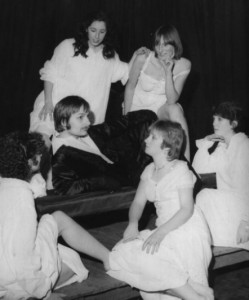
The houses were sold off – the chapel was converted into a studio, and in the 1960s it was used to film the children’s shows “Trumpton” and “Camberwick Green”. In 2004 it was put on the market once again. The “Ark of the Covenant” also went on the market in 2010, and was sold to the Georgian Orthodox Church for £1 million. It was this sale that led to the final piece of drama in the history of the Agapemonites. The deeds of the church claimed that the proceeds of its sale should be put “to the benefit of the Agapemonites”, and with the church defunct the six grand-daughters of John Hugh Smyth-Pigott appeared in court to claim that this meant that they should receive the money. However the judge in the case ruled against them, and so it was decided that the Charity Commission would distribute the funds to other good causes which “most closely resemble the Agapemonites”. A tall order in the modern age, to find a charity that resembles such a peculiar Victorian institution and its two self-proclaimed divine incarnations.
Images via wikimedia except where stated.
[1] This being among the most radical of his teachings, as most mainstream Islamic belief teaches that Jesus (or “Isa”) would return in the flesh as the Messiah in the end days.
[2] The first such ceremony to ever take place in the history of the bishopric of Bath and Wells.
[3] Though the grim end foretold by Ghulam Ahmad failed to materialize, his religion currently has around 20 million followers while there are no remaining Agapemonites. So he still came out in the lead.
[4] A much more respectable work than many others on the topic, like Donald McCormick’s Temple of Love which includes several verifiable falsehoods such as claiming that Ruth Preece left the Agapemonites (when she was actually their final member). The best work however is probably that of local historian Joshua Schwieso, who has written several papers on the group.
